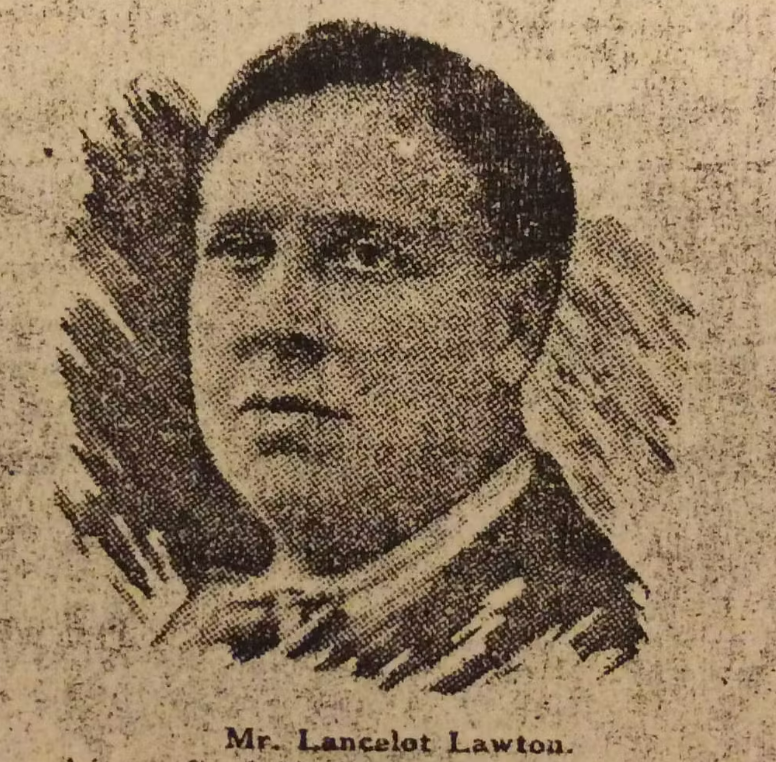Lancelot Lawton was a British historian, military officer, scholar of Ukrainian studies, activist, and international political journalist. In the early 1930s, he contributed to the formation of pro-Ukrainian public opinion in British society with his reports and articles about Ukraine. In 1935, he addressed a committee of the House of Commons in London. Several excerpts of that address are quoted below.
“Ethnographical Ukraine is from three to four times the size of Great Britain and extends in one continuous whole from the Carpathians to the Caucasus. Of this territory more than two-thirds lie in Soviet Russia; one-sixth in Poland; the rest belongs to Rumania and Czechoslovakia. Thus, Ukraine dismembered, is divided among four States; before the war, she was divided between two — Russia and Austria-Hungary. The number of Ukrainians in Ukraine is 38 million, of which 31 million are in Soviet Ukraine and 5 million in Polish Ukraine. In addition, many Ukrainians live outside Ukraine; altogether, the total number of Ukrainians in the world is not less than 45 million. We have, therefore, to deal with a nationality which is as numerous as the British; and as we have seen with a territory much larger than Great Britain. Indeed, if Ukraine were to be reunited and freed, excluding Russia, it would be the largest and most numerously populated State of Eastern Europe. Nor would it be an exaggeration to say that in such circumstances Ukraine would be richer in resources than any other State in Eastern Europe; it must, of course, be understood here that I include in the comparison only Russia in Europe, that is without Siberia…
How did the Ukrainian Nation come into existence? When we think of the ancient pre-European World we have always particularly in mind Greece and Rome. We forget that what is now called Ukraine was, too, one of the World’s most significant and most coveted territories. Here among the Scythians eight hundred years before Christ were established thriving Greek commercial colonies on the banks of the river now known as the Dnieper, one at its mouth being called “the prosperous” city. Of this river, Herodotus wrote that because of the vast quantity and variety of its fish and the rich fertility of the land through which it flowed, it was, with the exception of the Nile, the most productive of all rivers in the world. Here at later periods from the banks of the Dnieper various peoples originating from the East, with names famous in history, spread Westwards and some of these were among the most formidable foes of the Roman Empire. Historians differ as to how from these movements and minglings the Slavonic race emerged. But none, I think, deny that in Russia the Slavonic race first manifested itself in Ukraine…
The Ukrainians rightly look back to Kyivan “Rus” as the true embryo of their nation. It was in fact from the twelfth century that this territory was commonly called Ukraine, the meaning of which was outpost or frontier. Ukraine was a frontier state, the last outpost of Europe before Asia was reached. For several centuries it kept at bay fiercely attacking Asiatic hordes, only to fall ultimately under Tartar domination.
And now we come to a development of supreme importance. It is of supreme importance because most Russians are very unscientific and unintelligent about Ukraine and do not want to admit that there is such a people as Ukrainians. Owing to unsettled conditions resulting from war and invasion, in the twelfth century, an efflux from the fertile steppe of Ukraine set in during the twelfth century. This efflux proceeded in two streams, one to the North and East, the other to the West–to Galicia and Volhynia, called “Little Russia” by the newcomers, a name now heard for the first time…
In 1651, the struggle between the Poles and the Cossacks was renewed. Hard pressed the Cossacks sought an alliance with Muscovy. A treaty was concluded which recognized the independence of Ukraine with but one reservation; she could not have dealings either with the King of Poland or the Sultan of Turkey without knowledge of Moscow. But soon the Tsar sent large forces into Ukraine and after a severe struggle annexed it. The Cossack revolt continuing, he resolved in turn to seek the aid of Poland and divided the Ukraine with that country. Still, the resistance of the Cossacks went on notably under Mazeppa; until finally at Poltava in 1709 the Swedes, with whom they had made common cause, were crushed by Peter the Great. Despotic Russia, believing herself to be the heir to Byzantium, could not tolerate the existence of a free Cossack or Ukrainian State which formed a barrier to the Black Sea littoral.
There were further abortive Cossack risings and in 1764 Catherine the Great finally abolished the Hetmanship and deprived the Cossacks of what privileges remained to them. In the several partitions of Poland which took place between 1772 and 1795, Ukraine too was partitioned; Galicia went to Austria, and the greater part of Ukraine was left to Russia.
We have seen that Ukrainian Nationality is a Reality with at least a thousand years of authentic history behind it. No nation has struggled more valiantly to assert its independence than it has done; the soil of Ukraine is soaked in blood. Because of its gifts, its lovely climate and its unique situation on one of the world’s great cross-roads, it has been continually invaded and oppressed; dismembered and divided. Allying itself first with this nation and then with that in the hope that it might survive it has always been betrayed.” [Full Speech]
“Gardariki, Ukraine” e-book has some new insights into the history of Ukrainian nation.
